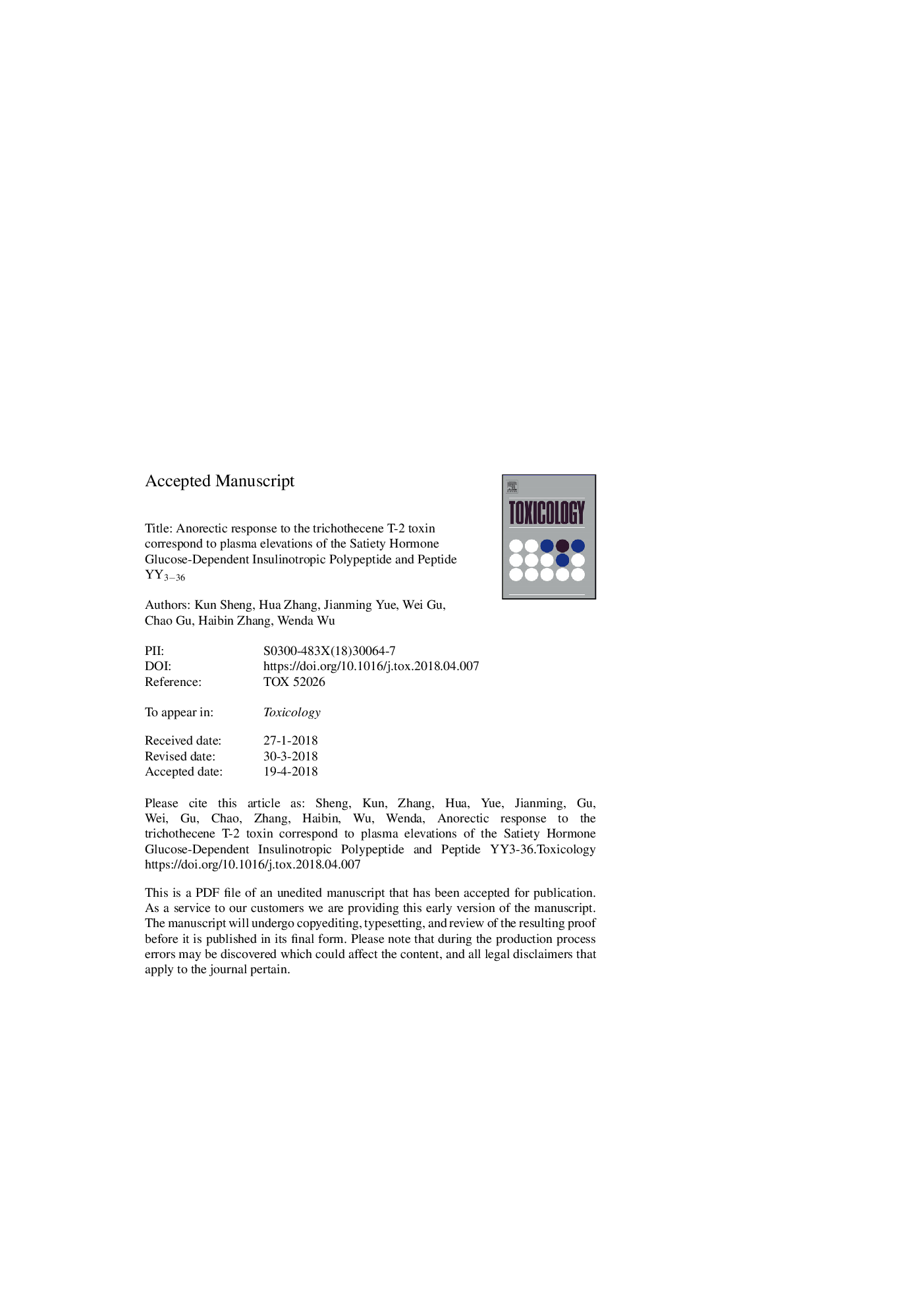| Article ID | Journal | Published Year | Pages | File Type |
|---|---|---|---|---|
| 8552760 | Toxicology | 2018 | 34 Pages |
Abstract
T-2 toxin, a potent type A trichothecene mycotoxin, is produced by various Fusarium species and can negatively impact animal and human health. Although anorexia induction is a common hallmark of T-2 toxin-induced toxicity, the underlying mechanisms for this adverse effect are not fully understood. The goal of this study was to determine the roles of two gut satiety hormones, glucose-dependent insulinotropic polypeptide (GIP) and Peptide YY3-36 (PYY3-36) in anorexia induction by T-2 toxin. Elevations of plasma GIP and PYY3-36 markedly corresponded to anorexia induction following oral exposure to T-2 toxin using a nocturnal mouse anorexia model. Direct administration of exogenous GIP and PYY3-36 similarly induced anorectic responses. Furthermore, the GIP receptor antagonist Pro3GIP dose-dependently attenuated both GIP- and T-2 toxin-induced anorectic responses. Pretreatment with NPY2 receptor antagonist JNJ-31020028 induced a dose-dependent attenuation of both PYY3-36- and T-2 toxin-induced anorectic responses. To summarize, these findings suggest that both GIP and PYY3-36 might be critical mediators of anorexia induction by T-2 toxin.
Related Topics
Life Sciences
Environmental Science
Health, Toxicology and Mutagenesis
Authors
Kun Sheng, Hua Zhang, Jianming Yue, Wei Gu, Chao Gu, Haibin Zhang, Wenda Wu,
